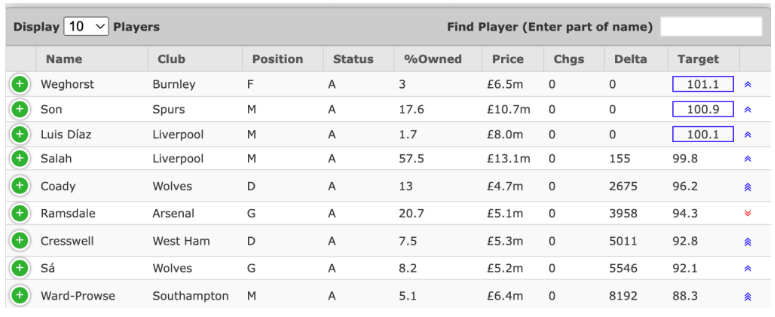Understanding FPL Price Changes: What You Need to Know

The Importance of FPL Price Changes
In the world of Fantasy Premier League (FPL), price changes are a crucial aspect that can significantly impact managers’ strategies and overall success. Understanding how and when these price changes occur is vital for FPL players aiming to optimise their squads and maximise their points. As the season progresses, prices of players fluctuate based on their performance, demand from players, and transfers, making it essential for managers to stay informed.
Mechanics of Price Changes
Price changes in FPL are determined by various factors, primarily based on the number of transfers in and out for a player. Each player has a dynamic value that can increase or decrease depending on their popularity among FPL managers. For instance, if a player like Mohamed Salah performs exceptionally well, more managers might transfer him into their teams. This surge often leads to the player’s price rising, which can be beneficial for those who acquired him at a lower price.
The official FPL website uses a statistical model that includes a player’s transfer activity over a specific period, typically measured during the week. A player must have a minimum number of transfers in to incite a price change, which is usually around 100,000 transfers. Conversely, a player’s price can drop when they are consistently sold by managers, indicating a lack of form or projected performance.
Recent Trends in Price Changes
As of the current FPL season, specific players have experienced significant price movements. For instance, the early performances in the season have seen notable price rises for emerging talents and surprise performers. To illustrate, players like Brighton’s Evan Ferguson and Arsenal’s Declan Rice began the season with relatively low ownership but saw their prices rise dramatically after standout performances in the first few game weeks.
Strategies to Navigate Price Changes
Managers should monitor the FPL price changes closely to take advantage of the market. Tools and resources are available online that provide live updates on price fluctuations and projected changes based on transfer trends. One common strategy is to make early transfers to benefit from price rises while avoiding late transfers which might lead to price drops. Additionally, being wary of player injuries or non-performances is crucial as it can result in rapid price declines.
Conclusion
In conclusion, understanding FPL price changes is essential for maximising your Fantasy Premier League potential. With players’ values constantly shifting throughout the season, keeping abreast of these changes can provide a significant advantage. Managers who can effectively navigate the market and utilise price changes to their benefit are more likely to succeed. As the season continues, being proactive and informed about player performances will remain critical for FPL success.









